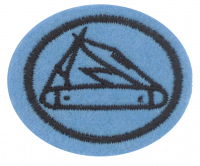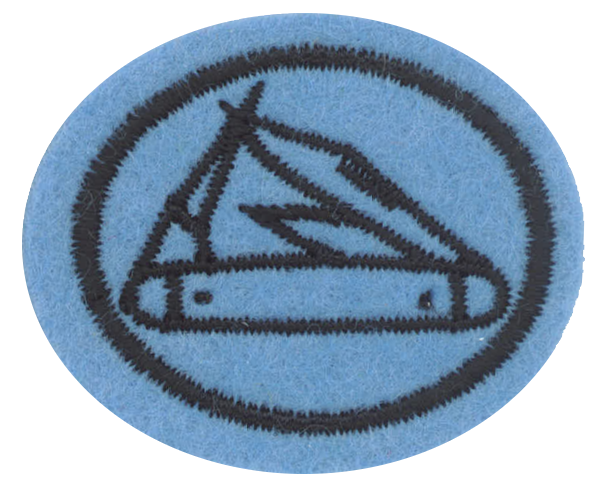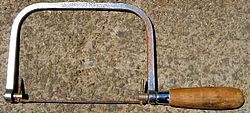Especialidades JA/Tallado en madera/Respuestas
Nivel de destreza
2
Año
1938
Version
14.11.2025
Autoridad de aprobación
Asociación General
1
2
Knife
Adventist Youth Honors Answer Book/Woodworking Tools/Knife
Chisel
Adventist Youth Honors Answer Book/Woodworking Tools/Chisel
Gouge
Adventist Youth Honors Answer Book/Woodworking Tools/Gouge
Coping saw
Coping saws are very useful for removing bulk. A carving can often be roughed in with a coping saw, and once the shape is cut out, knives, chisels, and gouges can be used to clean it up and do the final shaping. Coping saw blades can be sharpened with a triangle file, though they are cheap enough that they ore more frequently replaced when dull.
The blade can be installed on the coping saw so that it cuts on either the pull stroke or the push stroke. Experiment to see which you like better. To make a cut, clamp the piece to a bench or hold it firmly with your free hand or knee. Align the blade with the pencil mark you have made which will guide the cut. Gently work the saw up and down to make the cut. You may have difficulty at first, and this does take a little practice to master. But once you have it down, it is not all that difficult. Follow the line until the cut is complete.
3
Wood is very much like a bundle of straws glued together with a weak adhesive. It is easy to separate the straws from one another, but more difficult to break the straws. The woodcarver needs to keep this in mind as the piece is designed. For instance, if carving an animal, the grain (or "straws" in our analogy) needs to run in the same direction as the legs. Otherwise, the legs will easily break off.
4
Low relief, also known as Bas (pronounced bah)-relief is a method of sculpture which entails carving away the surface of a flat piece of wood creating a picture.
5
5a
5b
5c
5d
5e
5f



